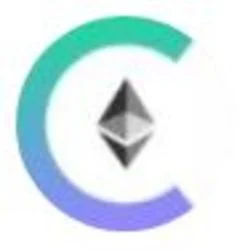Ethereum Founder Vitalik Buterin Reveals The Challenges Of The Network

The Ethereum blockchain is notable for its smart contract functionality and various other things. However, many might not be conversant with the challenges the network encounters. In a recent interview, Ethereum’s founder, Vitalik Buterin, revealed the biggest of them all.
Ethereum’s Biggest Challenge
Speaking with CNBC, Buterin mentioned that the biggest challenge that the “Ethereum ecosystem” faces is ensuring that it builds products that provide value to its users. According to him, the last decade was test-running, but now Ethereum needs to provide utility.
Ethereum is known to host some of the biggest decentralized applications (dApps), including prominent decentralized exchanges (DEXs) like Uniswap, Curve Finance, and Sushiswap. The network has also grown massively to the extent that several Ethereum layer-2 networks have sprung up in a bid to scale the network.
Despite this, it seems that Buterin believes that there is more to be done, even as Ethereum has asserted itself as the go-to network for dApps and other decentralized solutions. Meanwhile, ETH, its native token, is the second-largest cryptocurrency by market cap.
Buterin also spoke about how cryptocurrencies enjoy greater use in less-developed countries as people use crypto tokens to make payments and for savings.
Cryptocurrencies have long been touted as a hedge against inflation, and it would seem that crypto is being put to use where it is needed most. A recent report by Chainalysis showed that the highest-ranked countries for crypto adoption are being plagued with a devaluing fiat currency.
The Ethereum founder also stated that centralized entities like Binance need to take a back seat for crypto adoption to move forward. While he appreciates these entities’ role in growing the crypto industry, he believes crypto needs to become more decentralized.
His reason for saying this isn’t far-fetched as he noted that these entities are vulnerable to “both pressure from the outside and to themselves being corrupted.” Truly, centralized entities have taken many hits this past year, which has had far-reaching consequences on the industry.
Last year, one of the biggest crypto exchanges, FTX, collapsed, which had several ripple effects on the crypto industry and market. Meanwhile, the two largest crypto exchanges by trading volume, Binance, and Coinbase, are currently embroiled in legal battles against the SEC.
ETH price sits at $1,578 | Source: ETHUSD on Tradingview.com
The Future Of Ethereum
Last year, Ethereum transitioned from a proof-of-work consensus mechanism to proof-of-stake following the Merge. Buterin stated this move has made the network more decentralized as it is “harder to shut down” than a proof-of-work network.
He also banished the idea that the network was heavily reliant on him, which many had identified as a weakness as the government could easily go after him to clamp down on the network.
Related Reading: What The Drop In Spot And Derivatives Volumes Means For The Price Of Bitcoin
According to him, Ethereum has grown to become independent of him and the Ethereum Foundation. He points out how several independent applications on the blockchain have taken the workload off him and made the network more autonomous.
As to Ethereum’s future plans and projects, he said that the network is focused on privacy and scaling with the help of zero-knowledge (ZK) rollups. ZK rollups are layer-2 scaling solutions that help scale the Ethereum network by moving computation off-chain, thereby reducing the computing workload on the network. It also promotes privacy, as one can verify transactions without knowing what it is about.
Featured image from Bloomberg, chart from Tradingview.com




































































































